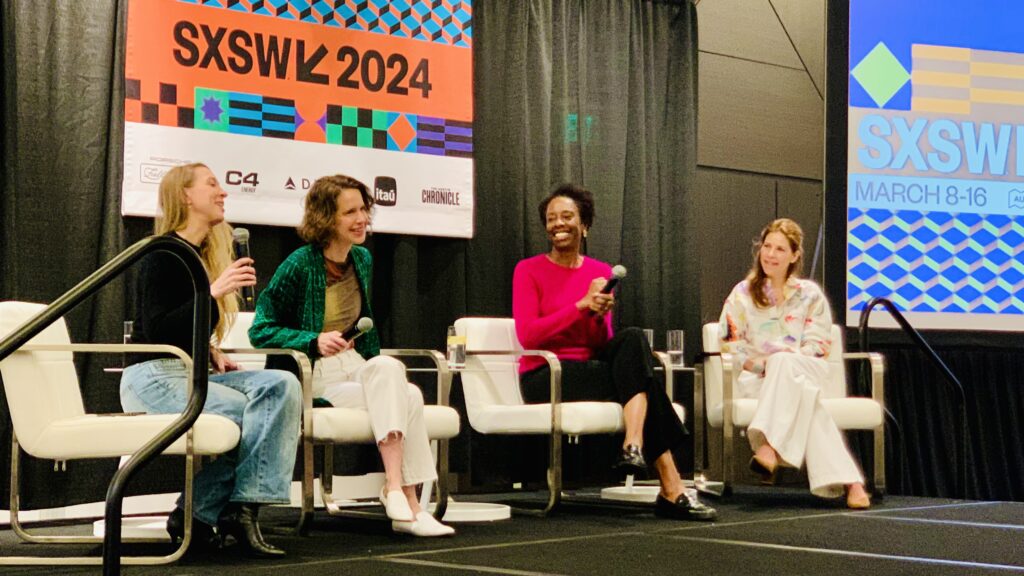Women’s Health 2.0: The Artificial Intelligence Era
Charting the evolution of women’s healthcare in the AI era, illuminating the promise and challenges of predictive tech to close the health gender gap.
Published April 12, 2024
By Brooke Grindlinger, PhD
Chief Scientific Officer

Less than 2% of global healthcare research and development is dedicated to female-specific conditions beyond cancer, as was starkly revealed in the January 2024 World Economic Forum and McKinsey Health Institute report, “Closing the Women’s Health Gap: A $1 Trillion Opportunity to Improve Lives and Economies.” Rectifying this disparity holds the potential to inject over $1 trillion annually into the global economy by 2040 through bolstered female workforce participation.
In February 2024, America’s First Lady Jill Biden unveiled a $100 million federal funding initiative for women’s health research, marking a significant milestone for the White House Initiative on Women’s Health Research intended to fundamentally change how the US approaches and funds research in this area. On March 9, 2024, the South by Southwest Conference hosted a pivotal panel discussion titled “Can AI Close the Health Gender Gap?” moderated by Sara Reistad-Long, a Healthcare Strategist at Empowered. This gathering of clinicians, digital health tech executives, and investors delved into the transformative potential of artificial intelligence (AI) and predictive technology in mitigating gender disparities in healthcare.
Women’s Health Beyond Reproduction
The panelists began by establishing a shared definition of ‘women’s health.’ Historically, women’s health has been narrowly defined as reproductive health, primarily concerning the female reproductive organs such as the uterus, ovaries, fallopian tubes, and to some extent, breasts. Yet, as panelist Christina Jenkins, MD, General Partner at Convergent Ventures, aptly pointed out, the scope of women’s health transcends this narrow scope.
“There’s so much more to women’s health than that,” she emphasized, advocating for a broader understanding. “We consider ‘women’s health’ as a specific practice… focused on things that are unique to women, which are those reproductive organs and [associated conditions], but also conditions that disproportionately… or differently affect women.” She elaborated with examples ranging from autoimmune diseases to conditions like migraine, colon cancer, and variances in women’s reactions to asthma medications.
Overlooked and Underserved: Women’s Health Blind Spots
The historical exclusion of women from health research and clinical trials has perpetuated the flawed assumption that women’s bodies and health outcomes mirror those of men, neglecting their unique biological and medical complexities. “Women were not included in medical research until 1993. Women are diagnosed later in over 700 conditions. Some of our most pressing chronic conditions that are on the rise take 5-7 years to be diagnosed—like autoimmune conditions—and 80% of them occur in women,” observed panelist Robin Berzin, MD, Founder and CEO of digital health company Parsley Health.
AI’s Promise in Closing the Research to Practice Gap
Alicia Jackson, PhD, Founder and CEO of digital health company Evernow, which is focused on women’s health at ages 40+, has spearheaded groundbreaking research that has yielded one of the most extensive and diverse datasets on menopause and perimenopause. This dataset encompasses a multifaceted understanding, ranging from the manifestation of bodily symptoms during these life stages to the impact of variables such as race, ethnicity, income levels, hysterectomy status, and concurrent medications on patient outcomes.
Furthermore, Jackson and her team have identified treatment protocols associated with both short-term relief and long-term health benefits. Despite possessing this wealth of information, Jackson posed a critical question: “I now have this massive dataset, but how do I actually get it into clinical practice to impact the woman that I am seeing tomorrow?” “There’s a huge opportunity for us to leverage clinical data in new ways to give us insights to personalize care,” added Berzin.
From Data Deluge to Personalized Care
Despite the increasing availability of rich research data on women’s health, significant challenges persist in promptly translating this data into effective patient care. With over a million new peer-reviewed publications in biomedicine added annually to the PubMed database, the sheer volume overwhelms individual healthcare providers. “That’s an impossible sum of research for any individual doctor…to digest and use,” observed Berzin. “New information takes 17 years to make its way from publication into medical education, and then even longer into clinical practice,” she lamented. “What I’m excited about when it comes to AI and closing the gender gap is the opportunity for us to close the research gap.
What AI will let all of us do is take in a lot of the data sets that have been unwieldy in the past and leverage them to personalize care. The rapidity and pace at which we can begin to gain insights from the data, which is otherwise like drinking from a fire hose, represents an opportunity for us to catch up [on] that gender gap.” Jackson added, “AI gives me a time machine…to immediately take those results and apply them and impact women today.”
AI Nurse Anytime, Anywhere
The conversation shifted to AI’s potential to address the critical shortage of healthcare providers in the United States. Berzin highlighted the systemic issues, stating, “We don’t have enough doctors. We are not training enough doctors. Nor are we importing enough doctors. We have really big disparities in terms of where the doctors are.” Jackson expanded on the role of AI beyond tackling the provider shortfall and fast-tracking diagnostic processes, emphasizing its potential to facilitate culturally sensitive care.
She emphasized that AI could go beyond delivering data and outcomes; it’s about understanding the nuances of cultural preferences in healthcare delivery. Jackson noted that women want more than just symptom discussion; they want to delve into the emotional and relational impacts of navigating the healthcare system. “Right now, no traditional healthcare system has time beyond that 15-minute appointment to listen and to understand.” However, AI offers the possibility of unlimited time for patients to share their experiences.
With the assistance of AI, patients can access personalized care on their terms, allowing for a more enriching and fulfilling healthcare experience. Jackson continued, “If you have a $9 per hour AI nurse that can take that entire [patient] history, that [the patient can] call up in the middle of the night, on your commute to work, and just continue to add to that [history]…now you’ve created this very, very rich experience. Suddenly, it’s healthcare on your terms.”
Women’s Patient Empowerment Through AI
In addition to its potential to enhance healthcare accessibility and availability, AI emerged as a catalyst for empowering women to take charge of their healthcare journey. Jackson underscored a prevalent issue in women’s healthcare: the need for multiple doctor visits before receiving a correct diagnosis. She highlighted AI’s transformative potential in bridging this gap by empowering women to input their symptoms into AI platforms like ChatGPT, potentially integrating data from wearable devices, and receiving informed guidance—such as urgent care recommendations—immediately. This represents a significant stride in patient empowerment.
AI’s Achilles’ Heel
However, Jenkins cautioned against the pitfalls of AI, citing the case of Babylon Health, a UK-based digital health service provider. She recounted a troubling incident where the Babylon Health AI platform, during a system test, misdiagnosed a woman experiencing symptoms of a heart attack as having an anxiety attack, while advising a man with the same symptoms and medical history to seek immediate medical attention for a heart attack.
“This is what happens when you build something well-meaning on top of bad data,” cautioned Jenkins. She went on to emphasize the critical need to use real-world evidence to mitigate gender biases entrenched in clinical research data. “There is an imperative, not just for the algorithms to eliminate bias, but to make sure that the data sources are there. That’s why we have to use real-world evidence instead of clinical research.”
Learn more about the opportunities and challenges surrounding the integration of AI-driven technologies into the healthcare system at the upcoming Academy conference: The New Wave of AI in Healthcare 2024, May 1-2, 2024 in New York.
